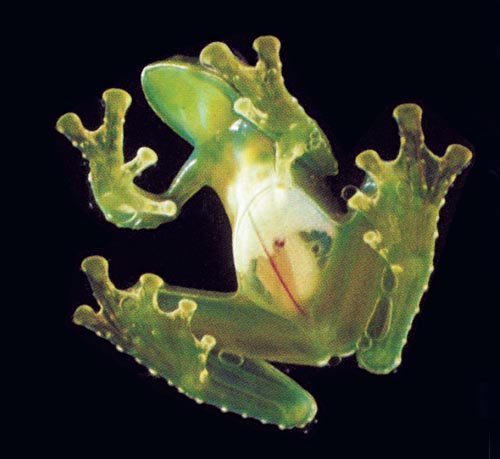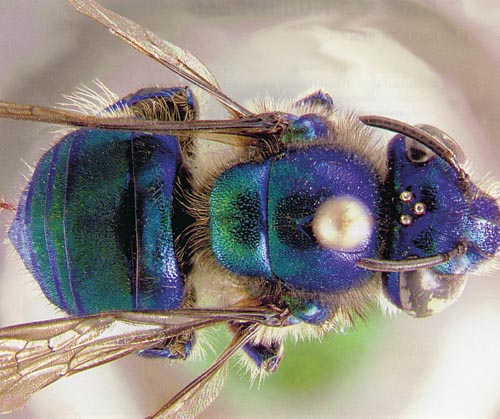
This Article From Issue
September-October 2013
Volume 101, Number 5
Page 393
DOI: 10.1511/2013.104.393
WHAT ON EARTH? 100 of Our Planet’s Most Amazing New Species. Quentin Wheeler and Sara Pennak. xxvi + 276 pp. Plume, 2013. $25.
It is tough for a species to get noticed around here. Of the estimated 10 million distinct organisms living on Earth undiscovered, only about 18,000 are found, distinguished, named, and described each year. Of the myriad ones taxonomists have described over this past century, only 100 are offered up for appreciation in Quentin Wheeler and Sara Pennak’s entertaining new picture book, What on Earth? 100 of Our Planet’s Most Amazing New Species. The authors honor the rising stars of speciation with superlative distinctions, including “prettiest,” “strangest,” “deadliest,” “largest,” “most endangered,” “best mimic,” and even “best named.”

From What on Earth?
What on Earth? should have plenty to interest nature-gapers one and all, from those seeking intellectual wonder to those motivated, as Wheeler and Pennak freely contemplate, by “wild-eyed capitalist greed.” The authors roll out not so much a pageantry of species exploration as a colorful carnival sideshow backed by the humble taxonomist behind the scenes. A surprising highlight of the book appears in the introductory essay. It offers an elegant, affectionate portrayal of the taxonomist at work, painstakingly hypothesizing, describing, distinguishing, and publishing to make a single species “officially exist” for future exploration. The authors’ narrative portrait impresses on the reader nothing less than a taxonomist’s encompassing compassion for the Earth and for humanity’s plight amid the increasing threats to our planet’s biodiversity.

From What on Earth?
In the "prettiest" category the authors present the debonair, iridescent blue-green Paisa orchid bee (Euglossa paisa), discovered in Colombia in 2005.
Each subsequent chapter of this small but lavishly illustrated book introduces one superlative category. It then showcases the top 10 contenders within that category with a full-page color close-up and a facing page of fascinating and frequently surprising information. In the “prettiest” category the authors present the debonair, iridescent blue-green Paisa orchid bee (Euglossa paisa), discovered in Colombia in 2005. These bees “have tongues four times longer than their heads,” and the males collect orchid “flower fragrances that they store in special grooves on the hind legs” for later release to attract a female. One of the “best species mimics” is the Mache Mountains glass frog (Cochranella mache), discovered in Ecuador in 2004. It has glassy green skin so transparent “that bones and internal organs—such as intestines and beating hearts—can easily be seen from their ventral (under) side.” One of the winners of “best name” is the Harry Potter–inspired apparating moon-gentian (Macrocarpaea apparata), whose bewitching plate-sized blooms at dusk “suddenly materialize out of nowhere in the darkening woods.”
A quick dip into this book provides a refreshing splash of narrative amusement and aesthetic ecstasy for even the world-weariest of readers. The authors have a more substantive agenda, though. Behind their carnival-like hawking of gaudy colors, freakish traits, and sometimes superfluous puns, they remain devoted to that figure of the diligent taxonomist as they plead for an “acceleration of species exploration” before it is too late. The 100 winning species are, as they note, “just a teaser”; with the taxonomist’s increased support, we’ll find that “the main act is just beginning.”
Jenny Jennings Foerst is an associate editor of American Scientist, where she covers medical and public health research, anthropology and geology, and art–science interfaces. She received her M.A. in English and Ph.D. in American literature from the University of North Carolina at Chapel Hill.
American Scientist Comments and Discussion
To discuss our articles or comment on them, please share them and tag American Scientist on social media platforms. Here are links to our profiles on Twitter, Facebook, and LinkedIn.
If we re-share your post, we will moderate comments/discussion following our comments policy.